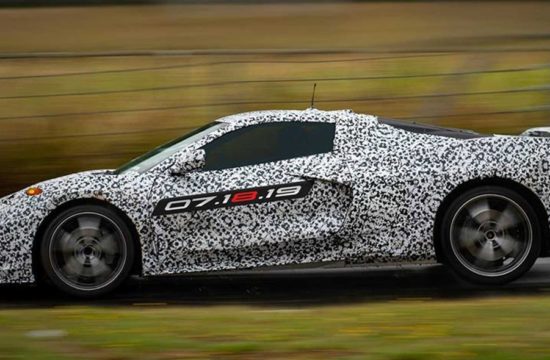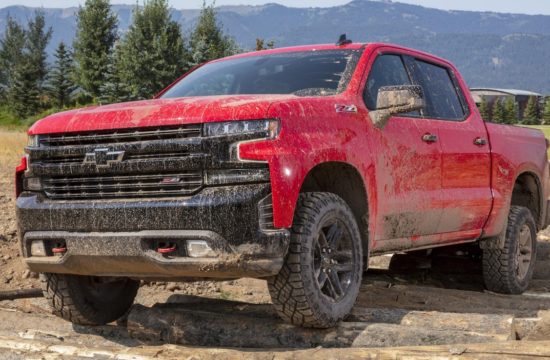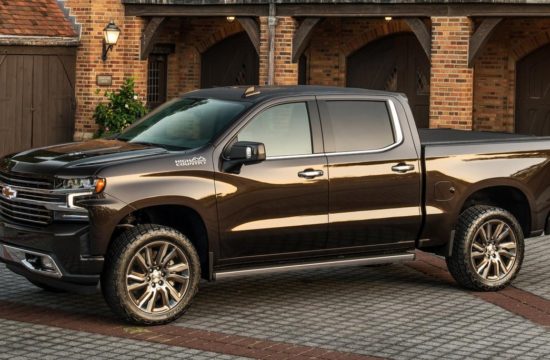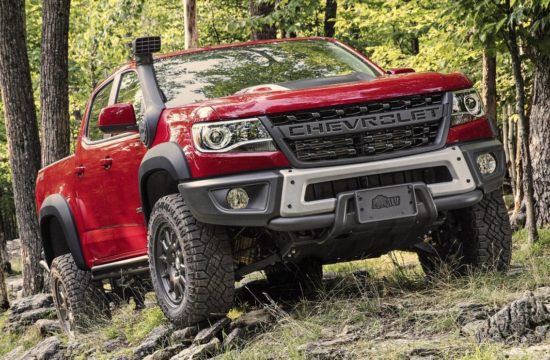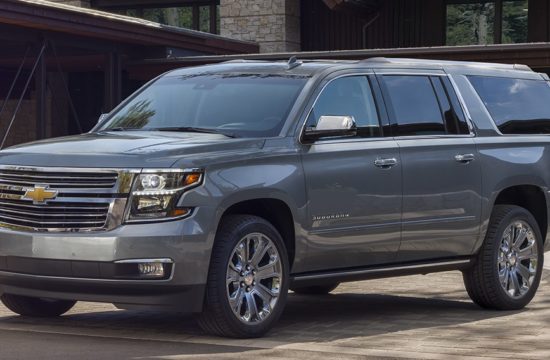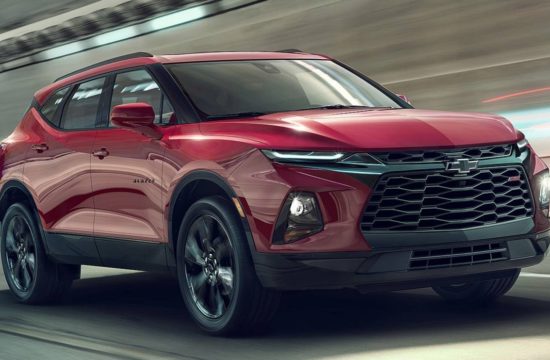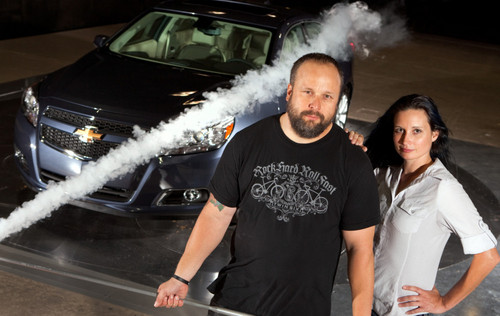
Alright, we need to explain all this. They study lots of bottoms to make the best seats for the new Malibu, and that breaking wind has something to do with aerodynamics!
But that’s how GM describes what these guys do. With the new Malibu Chevrolet engineers are taking a different approach to development and testing the car. They’re more like a sports team trying to win a championship. They have until 2013 when the car is set to launch.
The aerodynamic engineers for the 2013 Malibu are John “Moose” Bednarchik and Suzanne “Suzy” Cody. By breaking many winds, they managed to fine-tune the car’s design and save 2.5 mpg. They’ve fitted the car with shutter grilles for that purpose.
Then we have Daniel Cohen and Cheryl Hajciar, two engineers who are in charge with the new Malibu’s seats. These guys have studied every kind of bottoms, all shapes and sizes! That’s because their seats must offer the maximum comfort for every passenger or driver.
Here’s the story of Chevrolet Malibu engineers:
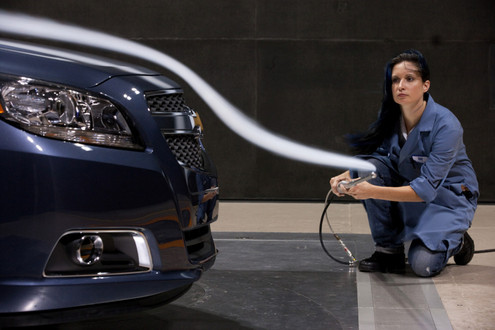
Aerodynamic duo bring life’s passions to help Malibu buyers save money at the pump
John “Moose” Bednarchik and Suzanne “Suzy” Cody are not your typical automotive engineers. He’s an admitted “fitness nut” who got a second chance at life after nearly dying of a heart attack at age 33. She’s a blue-haired, Camaro-driving, roller derby-playing mom. Together, they’ve helped shape the design of Chevrolet’s most fuel-efficient midsize car ever, the 2013 Malibu.
Because of their work, more than 60 counts of wind drag have been removed as a result of the new Malibu’s shape and fine-tuning of the car’s exterior design. These aerodynamic improvements give customers up to 2.5 miles per gallon more on the highway.
Bednarchik, 39, the lead aerodynamic engineer for the all-new Malibu, knows more than most how big changes can improve efficiency – aerodynamic and otherwise. Since his heart attack, he lost 100 pounds and maintains his weight by following a rigorous health and fitness regimen. He joined Motor City CrossFit in Sterling Heights, Mich. and participates in a high-intensity strength and conditioning program typically endured by police, firefighters, soldiers and professional athletes.
Bednarchik applies the same intensity and discipline at work. After four years of development and more than 400 hours testing and fine-tuning the new Malibu in GM’s wind tunnel, Bednarchik achieved the lowest wind drag for a Chevrolet midsize car in the past 100 years.
Overcoming wind resistance can account for one-third of the fuel used at highway speeds.
“A tough training regimen and aerodynamics have a lot in common. In each case, you worry about increasing the total efficiency of the body. For aerodynamics, we want forms and surfaces that make the vehicle more slippery when traveling through air. Good aerodynamics means free fuel economy for our customers.”
The Malibu’s aerodynamic improvements are measured one “count” at a time – or 0.001 coefficient of drag. Initial testing of pre-production Malibu vehicles in GM’s wind tunnel has recorded a low drag coefficient nearly as efficient as the Chevrolet Volt electric vehicle of .28 Cd.
Some of the Malibu’s key aerodynamic features that help improve fuel economy include:
- 11 counts: Outside rearview mirrors are specifically designed to deflect wind without “upsetting” the airflow
- 10 counts: Rounded front corners – from the bottom of the fascia up through the headlamps – help air flow smoothly along the Malibu’s body sides
- Seven counts: Shutters in the lower grill opening on select models open and close automatically to maximize aerodynamic efficiency. This increases cooling airflow to the engine under certain conditions, such as under high engine loads at low speeds, and reduces aerodynamic drag when extra cooling is not needed.
Like Bednarchik, his colleague Suzanne Cody defies any preconceived notions associated with engineers.
By day, this 34-year-old mother of two works to make the all-new Malibu more efficient. At night, she is “Shovey Camaro,” a member of the Bath City Roller Girls derby team from Mt. Clemens, Mich. Her derby number of “6.2L” pays homage to the power and size of the V-8 engine in her 2010 Camaro SS, and her blue hair displays her passion for GM.
“When all the other moms pull up to school in their minivans or crossovers, I arrive in my Inferno Orange, 426-horsepower Camaro Coupe with my blue hair and twin child seats in tow,” said Cody. “I usually get a few laughs and some stares, but roller derby has given me the confidence I need to aggressively work toward my goals.
“For a lot of people, their work and private lives are fairly well segregated, but that doesn’t work for me. I apply the same passion at the roller derby and at work, to benefit our customers.”
Improving the aerodynamic efficiency of the new Malibu wasn’t easy. Bednarchik and Cody’s testing is detailed and exhaustive, at times requiring midnight shifts in GM’s wind tunnel in Warren, Mich. They test aero changes as small as 1 millimeter at a time, and they may test one part of the Malibu multiple times until they are satisfied they’ve achieved the most efficiency possible.
“Negotiating the competing interests of design, manufacturing and vehicle engineers – all of whom have different goals for an individual part or the vehicle’s overall design – can be inspiring,” said Cody. “But we all have a common goal – to give Malibu customers around the world Chevrolet’s most fuel-efficient midsize car ever.”
Adding to the complexity of vehicle design, Bednarchik and Cody also needed to create an aerodynamically efficient Malibu that meets the government safety requirements of multiple countries around the world.
“The Malibu was my first assignment on a truly global program, so I spent a lot of time researching the different standards around the world,” said Bednarchik. “For example, smaller mirrors could improve aerodynamics further, but each global market has requirements for mirror size that must be met.
“Ultimately, we were able to design the Malibu so that drivers around the world would benefit from aerodynamics, or free fuel economy for our customers,” Bednarchik said. “It’s amazing when I think that the design decisions we made in the wind tunnel could save Malibu buyers around the world hundreds – if not thousands – of dollars at the pump.”
The new Malibu will be sold in nearly 100 countries on six continents. It is available in LS, LT, ECO and LTZ models in North America. Malibu production in the United States is scheduled to begin in early 2012 with the ECO model. Malibu will be built in multiple locations around the globe, including the Fairfax, Kan. and Detroit-Hamtramck assembly plants in the United States. Pricing will be announced later this year.
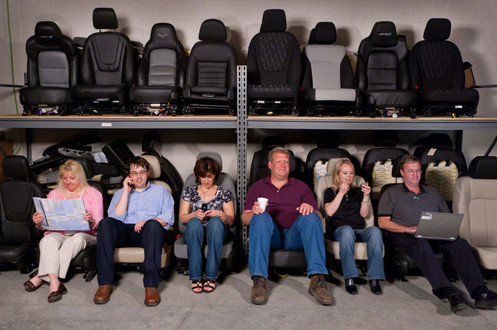
Engineers analyze more than 4,600 pressure points to ensure maximum seat comfort
Chevrolet Malibu seat performance engineers Daniel Cohen and Cheryl Hajciar know more about keeping hindquarters happy than a good masseuse. Cohen and Hajciar are tasked with ensuring that customers of all shapes and sizes get maximum comfort when sitting in the all-new 2013 Chevrolet Malibu. They use high-tech tools and real-world ride evaluations to deliver the best-possible seat comfort for Malibu customers around the world.
The 2013 Malibu seats were designed with input from engineers and designers around the world. The European team designed the seat and engineers from North America and Asia enhanced them to match consumer comfort requirements in their respective regions.
Cohen works in the lab at General Motors’ seat comfort testing facility in Milford, Mich. He used state-of-the-art digital pressure-mapping technology to scan the rear-end impressions of people of all shapes and sizes.
The system takes a snapshot of a person’s back and rear-end pressure distribution over the seat surface, creating a map with more than 4,600 data points. The information is transferred to a laptop computer that generates graphics illustrating how occupants sit in the seat statically or while driving.
Complementing seat-pressure mapping, Cohen also uses a rear-end test machine that simulates the effects of seat force and deflection through various sized buttock-shaped plates. They are made of aluminum and can weigh up to 250 pounds.
“This test allows us to understand how far a customer will compress into the seat to ensure the selected seat foam and other materials can support the pressure,” said Cohen. “We want to find the sweet spot of seat comfort: a seat that is neither too firm nor too soft, but just right.”
While Cohen’s job is in a laboratory, Hajciar works on the road. She coordinates Malibu seat ride evaluations with several volunteers, spending hundreds of hours logging thousands of miles to ensure she gets sufficient feedback on seat prototypes.
“Our seat evaluators often ride long distances to achieve our mission of creating the most-comfortable seat possible,” said Hajciar. “We are being meticulous about the details so that when customers get behind the wheel of a 2013 Malibu, they’ll immediately feel the difference.”

